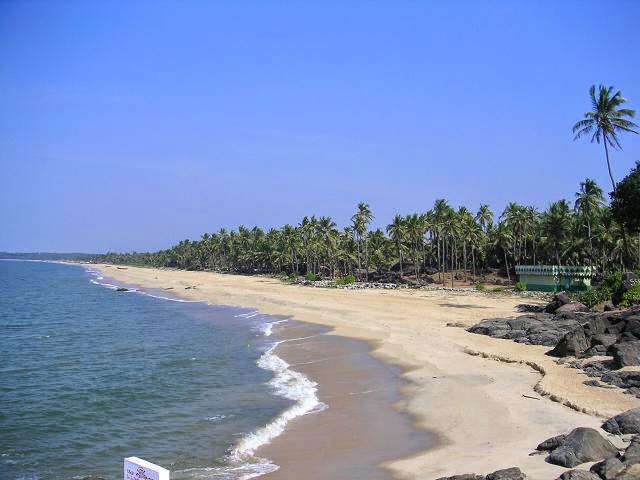
തിരുവനന്തപുരം/അമ്പലപ്പുഴ:
ചെറിയ മത്സ്യങ്ങളെയും കടല്ജീവികളെയും (ട്രഷ് ഫിഷ്) ഫിഷറീസ്
ഉദ്യോഗസ്ഥരുടെ ഒത്താശയോടെ തൂത്തുവാരുന്നതിനേത്തുടര്ന്ന് ചെറുകിട
മത്സ്യത്തൊഴിലാളികള് പട്ടിണിയില്. സര്ക്കാരും ഹൈക്കോടതിയും നിരോധിച്ച
ട്രഷ് ഫിഷ് വേട്ടയ്ക്കു ഫിഷറീസ് ഉദ്യോഗസ്ഥര് കൂട്ടുനില്ക്കുന്നത്
വിവിധതരം വളങ്ങള് ഉത്പാദിപ്പിക്കുന്നതിനു വേണ്ടിയാണ്. കടലിന്റെ
അടിത്തട്ടിലാണു മത്സ്യക്കുഞ്ഞുങ്ങളും കടല്സസ്യങ്ങളും ഞണ്ടും പാരും
ശംഖുകളും ചിപ്പികളും കൊഞ്ചും കൂരിക്കായും കടല്പ്പുഴുക്കളും വിവിധതരം
കടല്ജീവികളുമുള്ളത്. പരമ്പരാഗത മത്സ്യത്തൊഴിലാളികള് വലയിടുമ്പോള്
ഇത്തരം ജീവികളെ ലഭിച്ചാല് അപ്പോള്തന്നെ കടലില് തിരികെക്കളയാറാണു
പതിവ്.
മത്സ്യങ്ങളുടെ വംശനാശമുണ്ടാകാതിരിക്കാന് വേണ്ടിയാണ് ഈ പതിവ്. എന്നാല്
ഇപ്പോള് വലിയതുറ, നീണ്ടകര, ശക്തികുളങ്ങര, അഴീക്കല് തുടങ്ങി ഭൂരിപക്ഷം
ഹാര്ബറുകളിലും മത്സ്യത്തിനേക്കാള് കൂടുതല് കൊണ്ടുവരുന്നത്
മത്സ്യക്കുഞ്ഞുങ്ങളെയും ട്രഷ് ഫിഷിനെയുമാണ്. മത്സ്യസമ്പത്തു
വര്ധിപ്പിക്കുന്നതിനു വേണ്ടി ലക്ഷങ്ങള് മുടക്കി ഹാച്ചറുകളില്
ഉത്പാദിപ്പിക്കുന്ന മത്സ്യക്കുഞ്ഞുങ്ങളെ ജലാശയങ്ങളിലേക്കു സര്ക്കാര്
വിടുമ്പോഴാണു കടലില്നിന്നും കൂട്ടത്തോടെ കോരിയെടുത്തു
നശിപ്പിക്കുന്നത്. കുഞ്ഞുമത്സ്യങ്ങള് കിലോയ്ക്കു പത്തുരൂപയ്ക്കാണു
തൂക്കിയെടുക്കുന്നത്. ഒരു കിലോ അയലക്കുഞ്ഞും മത്തിക്കുഞ്ഞും
തൂങ്ങണമെങ്കില് 300 മുതല് 1000 എണ്ണം വരെയെങ്കിലും വേണ്ടിവരും. വലിയ അയല
130 രൂപയ്ക്കും (കിലോ) മത്തി നൂറുരൂപയ്ക്കുമാണു കച്ചവടക്കാര്
ഹാര്ബറില്നിന്നെടുക്കുന്നത്. വാള, ഉലുവ, പ്ലാത്തി, വെട്ടല് എന്നീ
മത്സ്യങ്ങളുടെ കുഞ്ഞുങ്ങളും വ്യാപകമായി നശിപ്പിക്കപ്പെടുന്നു. കണക്കുകള്
നോക്കുമ്പോള് കോടികളുടെ മത്സ്യസമ്പത്ത് ട്രഷ് ഫിഷിംഗിലൂടെ
നഷ്ടമാകുന്നു.
തിരുവനന്തപുരം, കൊല്ലം ഹാര്ബറുകളില്നിന്നു കഴിഞ്ഞ കുറേ ആഴ്ചകളായി ഓരോ
ദിവസവും 15 ടണ് ട്രഷ് ഫിഷ് കടത്തുന്നുണ്ട്. വളം നിര്മ്മാണത്തിന്
തമിഴ്നാട്ടിലേക്കാണു ഇതു കൊണ്ടുപോകുന്നത്. ഹാര്ബറുകളിലെ ഫിഷറീസ്
ഉദ്യോഗസ്ഥരുടെ അറിവോടെയാണു ട്രഷ് ഫിഷ് കടത്ത്. ചെറുജീവികള്
നശിക്കുന്നതു മൂലം കടലിലെ ഭക്ഷ്യശൃംഖലയാണു നശിക്കുന്നത്.<br />
മുന്പില്ലാത്ത രീതിയില് മത്സ്യത്തൊഴിലാളികളുടെ വല ഇപ്പോള്
കടല്പ്പന്നികള് നശിപ്പിക്കുന്നുണ്ട്. ഭക്ഷ്യശൃംഖല മുറിഞ്ഞതാണ് ഇതിനു
കാരണമെന്നു മത്സ്യത്തൊഴിലാളികള് പറയുന്നു. സര്ക്കാര് നിരോധിച്ച
ലൈറ്റ് ഫിഷിംഗ് ഇപ്പോള് വ്യാപകമാണ്. കടലില് എല്.ഇ.ഡി. ലൈറ്റുകള്
വിതറിയശേഷം അവിടെയെത്തുന്ന മത്സ്യങ്ങളെ പിടിക്കുന്നതാണ് ഈ രീതി.
ഇതും മത്സ്യസമ്പത്തിനെ ദോഷകരമായി ബാധിക്കുന്നു. ഇത്തരം
പ്രവണതകള്ക്കെതിരേ സര്ക്കാര് അടിയന്തരനടപടിയെടുക്കണമെന്നാവശ്യപ്പെട്ടു
കേരള ഫിഷറീസ് കോ- ഓര്ഡിനേഷന് കൗണ്സില് മുഖ്യമന്ത്രിക്കും ഫിഷറീസ്
മന്ത്രിക്കും നിവേദനം നല്കി. ട്രഷ് ഫിഷ് വേട്ടയ്ക്കു സഹായം നല്കുന്ന
ഫിഷറീസ് ഉദ്യോഗസ്ഥരുടെ പട്ടിക സര്ക്കാരിനു നല്കാന് തയാറാണെന്നും
കൗണ്സില് അറിയിച്ചിട്ടുണ്ട്. മത്സ്യക്ഷാമം രൂക്ഷമായതോടെ വള്ളങ്ങള്
കടലില് ഇറക്കാനാവാതെ ആലപ്പുഴ ജില്ലയിലെ പുന്നപ്ര ചള്ളി, തോട്ടപ്പളളി
ഹാര്ബര് പറവൂര് ഗലീലിയ എന്നിവിടങ്ങളിലെ ചന്തക്കടവുകളുടെ പ്രവര്ത്തനം
നിലച്ചു. തൃക്കുന്നപ്പുഴ, ആറാട്ടുപുഴ, തോട്ടപ്പളളി, വളഞ്ഞവഴി, അമ്പലപ്പുഴ,
പുറക്കാട്, പുന്നപ്ര, തുമ്പോളി, ചെത്തി, മാരാരിക്കുളം, അര്ത്തുങ്കല്,
തൈക്കല് ഭാഗങ്ങളില്നിന്നായി നൂറുകണക്കിനു വള്ളങ്ങളാണു കടലില്
മത്സ്യബന്ധനത്തിനു പോയിരുന്നത്.
ആയിരക്കണക്കിനു രൂപയുടെ ഇന്ധനം ചെലവിട്ടു കടല് അരിച്ചുപെറുക്കിയിട്ടും
പൊടിമീന്പോലും കിട്ടാതെ വള്ളങ്ങളില് ഭൂരിഭാഗവും
കരയ്ക്കുകയറ്റിവച്ചിരിക്കുകയാണ്. വള്ളത്തില് പണിയെടുക്കുന്ന
തൊഴിലാളികളും ചുമട്ടുതൊഴിലാളികളും ചന്തക്കടവുകളെ ആശ്രയിച്ചു
ജീവിക്കുന്നവരും പട്ടിണിയിലായി. അമ്പതിനുമേല് തൊഴിലാളികള്
പണിയെടുക്കുന്ന ഇന്ബോര്ഡ് വള്ളങ്ങള് ഒരു ദിവസം കടലിലിറക്കി
കരയണയുമ്പോള് 10000 രൂപയ്ക്കുമേല് ഇന്ധനം ചെലവാകും.<br />
കടം വാങ്ങിയും പലിശയ്ക്കു പണമെടുത്തും പ്രതീക്ഷയോടെ കടലിലിറക്കിയ
വള്ളങ്ങളുടെ ഉടമകള് മത്സ്യം കിട്ടാതായതോടെ ലക്ഷങ്ങളുടെ കടക്കെണിയിലായി.
ആവശ്യത്തിന് ഇന്ധനം കിട്ടാത്തതും വിലക്കൂടുതലും ഈ മേഖലയില്
തൊഴിലാളികള്ക്ക് തിരിച്ചടിയായി. പുന്നപ്ര, പറവൂര്, വാടയ്ക്കല്,
അമ്പലപ്പുഴ, പുറക്കാട് ഭാഗങ്ങളില്നിന്ന് ഒരാള് പണിയെടുക്കുന്ന
പൊങ്ങുവള്ളങ്ങള് കടലിലിറക്കുന്നുണ്ടെങ്കിലും ആവശ്യക്കാര് തീരെയില്ലാത്ത
കൊച്ചുമത്തി മാത്രമാണു കിട്ടുന്നത്. പൊടിമത്തിക്കു ചന്തക്കടവുകളില് വില
കിട്ടാത്തതുമൂലം കിലോമീറ്ററുകള് താണ്ടി വലയുള്പ്പെടെ
ദേശീയപാതയ്ക്കരികിലെത്തിച്ചു യാത്രക്കാര്ക്കു നല്കിയാണ് തൊഴിലാളികള്
അരിക്കുള്ള പണം കണ്ടെത്തുന്നത്.
ചെമ്മീനിന്റെ വരവുനിലച്ചതോടെ തീരദേശത്തുപ്രവര്ത്തിച്ചിരുന്ന പീലിംഗ്
ഷെഡുകളുടെ പ്രവര്ത്തനവും പ്രതിസന്ധിയിലായി. നൂറുകണക്കിനു സ്ത്രീകളാണ്
പീലീംഗ് ഷെഡുകളില്നിന്നു ലഭിക്കുന്ന വരുമാനംകൊണ്ടു ജീവിതം
തള്ളിനീക്കുന്നത്. ലോക്സഭാ തെരഞ്ഞെടുപ്പു കഴിഞ്ഞതോടെ നേതാക്കളും
തീരദേശത്തേക്കു തിരിഞ്ഞുനോക്കാറില്ല.
ആലപ്പുഴ ജില്ലയുടെ തീരപ്രദേശം വറുതിയിലമരുമ്പോള്
അന്യസംസ്ഥാനങ്ങളില്നിന്നു മത്സ്യമെത്തിക്കുന്നവര് ലക്ഷങ്ങള്
കൊയ്യുകയാണ്. തമിഴ്നാട്, ഗോവ, പുതുച്ചേരി, മംഗലാപുരം, മാഹി തുടങ്ങിയ
സ്ഥലങ്ങളില്നിന്ന് ഇന്സുലേറ്റഡ് ലോറിയില് മത്സ്യം ജില്ലയുടെ വിവിധ
വിപണികളില് എത്തിക്കുമ്പോള് മൊത്തവ്യാപാരിക്കു ലക്ഷങ്ങളാണു
കിട്ടുന്നത്. തുച്ഛമായ വിലയ്ക്കു കിട്ടുന്ന മത്സ്യം മൂന്നിരട്ടി
വിലയ്ക്കാണു വില്ക്കുന്നത്. ആഴ്ചകളോളം പഴക്കമുള്ള മത്സ്യം
ചീത്തയാകാതിരിക്കാന് രാസവസ്തുക്കള് ചേര്ക്കുന്നുമുണ്ട്.
മംഗളം ദിനപത്രം April 28, 2014
- See more at: http://www.mangalam.com/print-edition/keralam/176212#sthash.fl15e66i.dpuf






















